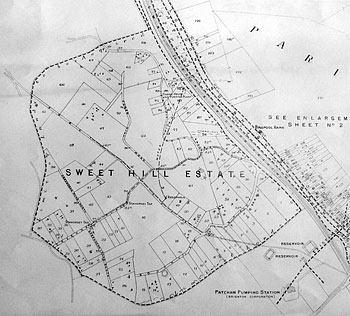- 1 February 2006
Memories sought on the lost shanty town of Brighton

On the map: The location of the Sweet Hill Estate shanty town
A little-known shanty town that existed briefly on a hill outside Brighton in the 1920s is the focus of new research by a University of Sussex lecturer.
Sweet Hill Estate developed on downland to the north of Patcham village to help cope with an acute housing shortage in Brighton after World War One. The assortment of old Army huts were home to around 24 families - and their farm animals.
Now Geoffrey Mead, lecturer in landscape studies for the Centre for Continuing Education, is carrying out doctoral research to find out what happened to the community, and why the estate returned to downland within a few years.
"I have always thought of undiscovered territory as in the realms of Scott of the Antarctic and Livingstone," says Mr Mead. "Yet on Brighton's fringes was a largely unknown settlement, with a lost landscape and a human history that I am sketchily recreating."
Shanty towns were cropping up around Brighton during the early part of the 20th century, including at Shoreham Beach and Woodingdean, as a response to the housing crisis. The assortment of shacks and converted tram and railway carriages largely made way for more substantial development and the creation of permanent communities.
Applications to construct homes on Sweet Hill in 1921 were originally refused by Steyning Rural District Council on the grounds that the area had an inadequate water supply and sanitary provision. But the Army surplus huts went up anyway, with many of the plots incorporating piggeries, goat pens and hen houses.
"It was this smallholding aspect of the estate that caused Brighton such anxiety and led the town to secure a compulsory purchase order on the land to protect the water supply," points out Mr Mead. He assumed that the huts were then demolished, as the hill now has only two modern dwellings. But his research has revealed that people were still moving to Sweet Hill in 1926.
"I would be very interested to hear from anyone else who lived at Sweet Hill or who remembers this part of Brighton's forgotten past," he adds.